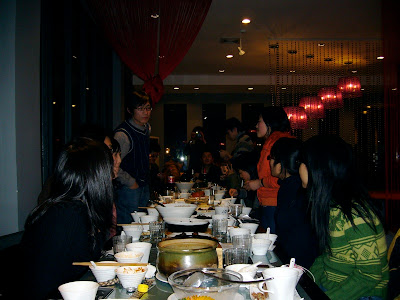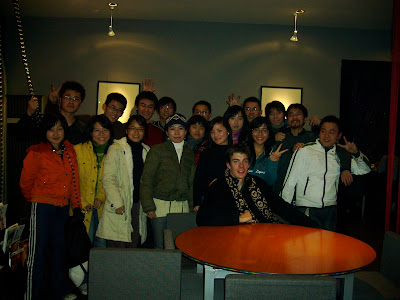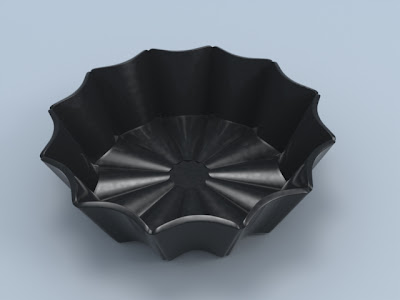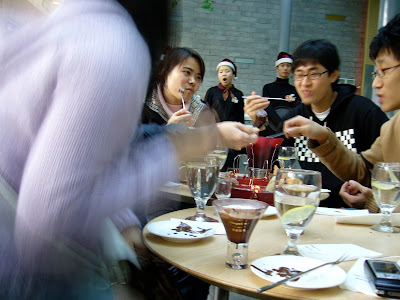After 11 months to within a day in China I did not want to leave and even now still want to return.
While there I had collected so may acquaintances that a week before leaving I needed to start tracking them down to say good bye. I had dinners with many of them, including my class, and then on the day I flew out I had a long bus ride to Shanghai Airport during which I SMSed everyone in my phone contacts list, mentioning my departure and thanking them for helping me have a great time in China. I flew out that afternoon to the United States to visit my parents and fix my Green Card before returning to Australia two weeks later.
I was very sad to leave China. Being there taught me a lot about the world and the work I should do. More importantly, it was one of the only places I have visited in recent years that I really appreciated. At the moment, I intend to return in the next few years to work or continue my studies.
Please read this if you are new to the blog!
There is further explanation of this blog on the My China Reflections Website, please visit it before reading too much more.
Also please keep in mind that you should really start reading from the beginning which means here, and work your way forward in time.
Thanks,
Mark
12.1.07
9.1.07
Last Class Dinner

A few days before leaving the country, I invited Lab 318 as well as a few other students out for dinner at a nearby restaurant. I had informed the restaurant a few days earlier that I would bring a group of about 30 students so they set aside a few tables and made one long one.

The whole group except for a few people who had to leave early.
We had a really great dinner which, because it was in China, only cost about AUS$100 for the whole meal. Afterwards, we all went to KTV. Eventually I had to go to start packing and so I said goodbye to everyone many times and went forth. On the way home, I went with a friend for a drive around Hangzhou one last time. The driver took us to a temple we had never visited at the edge of the large river to the south of the city.

Blake, Eric, and I at KTV
Milan Furniture From China

The Milan Furniture Festival is quite well known around the world. This year, ZJU became the first school in China to be invited to submit work for it. That being the case, we considered this project to be quite a serious representation of Chinese Industrial Design and its education so we set high goals. Our aim was to design a brand that would work well with both the international concepts of what China is and what China actually is to its people. With this brand we went on to generate a line of products to be displayed.
My role was as a Project Leader. However, I was also heavily involved in the Design Team. As a project leader it was my responsibility to head one of the two project teams. The other was to be lead by some other students and Ying Fantian. I was put on as a team leader because of my international experience and interest in project management. During the project I worked with about 10 people, a few of whom I had not worked with before.

This is a house found in Anji, a village known for its bamboo and used in film "Crouching Tiger Hidden Dragon." We were inspired by the organic form created with straight members.
Before I was given this project, Ying Fantian made some suggestions about the brand we should form. He suggested that China had a lot to offer in the area of bamboo - especially in certain applications that could not be found in any other countries. He also was of the mind that implementing technology in excess within a product was close to uniquely Chinese. Given this realm of thought, my team and I built a our brand around bamboo technologies and creating products that held elements of design that might be common in western furniture, such as the ones our work would be compared to in Milan, while also using elements of the traditional design of China.
Being associated with bamboo, we decided to create products in two subgroups, grassroots and modern design. For the purpose of a brief this would mean we were to use the same design system and elements to create two relatively different approaches that would appeal to different slices of society, both affected by the western world but nonetheless fundamentally Chinese.

This is one of my concepts inspired by the house seen above.
We were given a 4 x 3 metre exhibition space in Milan and decided to split it to suit our separate product lines. We asked people in the team to offer some concepts for each sector which we would go over in meetings. We would talk about each concept and I would put minutes online. We would then request that people develop the seemingly most successful concepts and come up with some more new ones.
As well as holding regular meetings to create our brand and then demonstrate it with a product line, we also did an amount of research into a few areas. Our prime interest was the innovative use of bamboo, so we contacted a some local establishments associated with this science. We found a few manufacturers as well as a research center that agreed to support our interest. They offered us information on many materials made from bamboo and showed us an extensive sample set that we later used in concepts.
In the end, we presented our work to Ying Fantian after he returned from Australia in January 2007. As I was leaving China a few days later I gave my position to Yao LinNing, one of my classmates. Later I was informed that there was no final submission made to the competition because the lab and manufacturers were understaffed during the New Year holidays.

This is a bowl using carbonized bamboo which ends up being quite similar to a low density ceramic.
This project was an interesting experience for me in a few ways. It was the first large project with very little guidance that I had managed alone. It involved about 10 students in my team and counted for about 1 month continuous work by everyone, although some of the team was only with us for the last two weeks. It was rushed and on occasions a bit stressful but much less so than large projects I had done previously. When I look back on it I think the main reason we were not so anxious is because we were part of a system and we could count on the system. We did not imagine that it would take the place of our work if our work was not good enough, but the system was there working beside us and would take the concepts that we delivered and help us turn them into a finished project. The system was the lab and the fact of a lab manager and a secretary. In this project, they were not commanding us. In a sense, I was commanding the team but I decided to lead a flat team so everyone had an opportunity to contribute interesting ideas. This meant that we could count on one another and we could move together though our individual ideas. We tried to ensure that there would not be subgroups that may disturb our flow but we also tried to use our resources. I found that if we each performed our roles and counted on one another to do so as well we would work very efficiently.
Our output was not perfect but the experience was exhilarating and we all understand each other much better because of it.
Below is a library of images assosiated with the Milan project
 |
| Milan Funriture Festival |
Labels:
commercial,
competition,
Design Team,
image,
Lab 318,
portfolio,
Project Leader,
proofed,
work
25.12.06
Christmas in Hangzhou

For me, a significant part of being somewhere for a year is spending Christmas there. This was in fact the first Christmas without my family but that did not affect much. The Chinese love to celebrate, so there were decorations and seasonal songs in every store. The Koreans from the international dorms are also really into Christmas so we ended up having Christmas dinner all together at an Indian restaurant. We chose this place because everywhere else was either booked out or far too expensive for Christmas. Places were marking up to 600 RMB per person. At the Indian restaurant, which is usually quite busy, there were no other customers and we had a private room to ourselves.

West Lake on Christmas day.
After lunch, we walked around West Lake to one of the many Haagen Dazs icecream stores to have dessert. We had fondue with seasonal ice cream. Following this, the Koreans had to return home, so it was just me and 3 other Australians. We decided to take a trip on a boat around the lake which was quite lovely.
Later that night, we all went to a Christmas concert at the Hangzhou Grand Theater and then to a coffee shop downtown. At the end of the day everyone was tired. It was a good Christmas.
20.12.06
Robotic Lawn Mower

In connection with our robotic vacuum cleaner project, we worked on a long term project with the same client for a robotic lawn mower. In this project, ZJU was combining a number of its mechanical, electrical, robotic, and design teams with the engineers from the source company. That meant a few things but the biggest effect of working with such a large and specialized team was that our job as designers and thinkers was shown in full light. Sadly, most of the requirements of the finished product were predetermined so we did not get to go though a complete design process to find the consumer needs. Instead, we concentrated more on facilitating the work of the engineering team from an elemental design efficiency standpoint, as well as outward styling and communication with the client and various ZJU teams. In addition, Lab 318 and Lab 127 were providing the modelling as we had a few fulltime CATIA seats on our permanent team.
My role on this project was as a consultant to some of the aspects of the design team from Lab 318. Although I was not directly involved in the design, I aided in the design of algorithms for path finding.
This project is obviously quite large and many months by many people were spent on it so it was not worked on by the design team every day. However, it was really interesting to watch as over the months the product came together into firstly a finished concept, then a prototype and finally go preparation for manufacture. As my involvement was limited to research and some advising on certain aspects, I was not too worried about how things went on the project. Instead, when it was the center of every one's attention, I could watch closely in an effort to understand the subtleties of their immense pipeline and learn more about the Chinese design method.
After watching many meetings, of which I could only understand the drawings and 1 in 100 words, I found that in general their overall method is similar to that which we would discuss at RMIT. That said, their concept methods and development methods seem to be a bit different. For concept work, they would not research first then build a set of parameters and sketch around that idea. Instead, they would guess what they were making and do a lot of concept sketches, then build backwards to get a well designed set of interior workings. In the outward-in process, although they would ship some of the work to engineers, they would continue to work with the engineers quite closely. For this particular product, we used Lab 127 to house the prototyping and development sectors so when the mechanics were being ironed out, this lab contained a few ID people, a few engineers and a few CATIA modelers. They worked one-to-one to build the good practices and effective structural design into the shell that the design team had previously carved out. Once a mechanical system was decided upon, the files were sent off to a prototyping company (the same one I burnt my foot at, in fact) who returned a fully functional frame a week or so later. I do not know much about the early history of the electronic systems for this project, but once we had a base to work on there was a motherboard strapped to it and tests were being run to develop a home friendly and functional robot. As far as I know, this process is still underway.
Upon reflection on my encounter with this project, I think I have now seen a product go from a list of needs on a piece of paper to a nearly consumer-ready, autonomous disk that cuts grass and recharges itself. Details aside, the fact of watching a near complete product pipeline inclusive of virtually every respect of the final outcome was pretty impressive. Despite my small role in this project, I learnt a huge amount about what can be done with design. It seems the value of this education is the communication I can help people have.
Labels:
127,
commercial,
Consulting,
image,
Lab 318,
portfolio,
proofed,
work
订阅:
博文 (Atom)